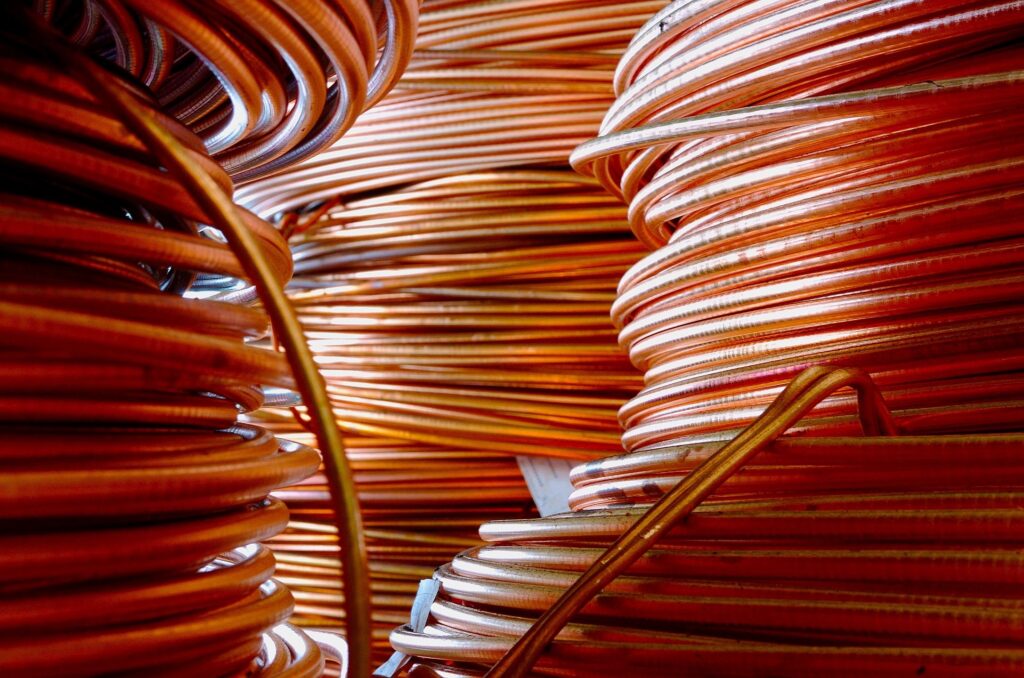Cable Insulation Levels
Cable insulation is designed to withstand the voltage stresses a cable will ex-
perience over its expected lifetime. An insulation level defines various insulation thicknesses within a single voltage rating. The two most com- mon levels are 100 percent and 133 percent. Normally, 100 percent insu- lation level is used on a grounded sys- tem and is sometimes also referred to as a grounded insulation thickness. Likewise, the 133 percent level is normally used on an “ungrounded” system and is referred to as an un- grounded insulation thickness.A 173 percent insulation level also exists and is normally used on an unground- ed system where further fault clear- ing time is needed.
Insulation Thickness for Various Levels
The specified insulation thickness for each insulation level is similar among various industry standards. The thickness varies with insulation level, generally becoming thicker as the insulation level increases. Typi- cal insulation thicknesses for many medium-voltage cables are shown in Table 1.
Specific insulation thick- nesses for voltage ratings up through 46 kV and various conductor sizes are given in National Electrical Manufac- turers Association (NEMA), Insulated Cable Engineers Association (ICEA), Underwriters Laboratories (UL), Ca- nadian Standards Association (CSA) and National Fire Protection Associa- tion (NFPA) publications.
Low-Voltage Cables
For cables rated 0 through 2,000 volts, the in-service voltage stress on the insulation is so low that the con- cept of insulation levels is largely un- necessary.For example,the operating voltage stress on a typical 600-volt cable is about 5 volts per mil of insu- lation thickness, i.e., each mil (0.001 inch) of insulation must withstand only 5 volts of electrical stress. On the other hand, the in-service volt- age stress on a typical 15 kV cable is about 50 volts per mil or 10 times more than that for a 600-volt cable. 600-Volt rated cables have much thicker insulation per volt of applied electrical stress and are thus over in- sulated from a voltage stress point of view.As a result,the cable insulation thickness specified by industry stan- dards for use in a grounded (100 per- cent) electrical system is also accept- able for use on an ungrounded (133 percent) electrical system.
There may be some applications that require 173 percent insulation levels for low-voltage systems such as high-resistant grounding systems. 173 percent insulation levels are not ad- dressed by most industry standards. However, NEMA and ICEA standards such as ICEA S-95-658-1999 Standard for Nonshielded Power Cables Rated 2000 V or Less for the Distribution of Electrical Energy recommends the use of a cable rated at least 1.73 times the phase-to-phase system volt- age. For example, a 480-volt system would require the use of a cable rat- ed at least 830 volts. Because of commercial availability, a 1 kV rated cable is typically used for this type of ap- plication in Canada and a 2 kV cable would be used in the United States.
Areas of Insulation Level Use
The cable insulation level required for a specific application depends on the speed at which the protective relay is designed to de-energize the electrical system in case of an elec- trical ground fault. A ground fault is an electrical short circuit from one phase (one conductor) of the electri- cal system to ground. If the protec- tive relay is set to de-energize the system in less than one minute, a cable with a 100 percent insulation level is adequate according to indus- try standards. If the protective relay is designed to de-energize the system within one hour, a cable with a 133 percent insulation level is required. If the protective relay is designed to de-energize the system after an indefinite period of time, a 173 percent insulation level cable is required. If de- sired, a cable with thicker insulation than specified in industry standards can be used for maximum system reliability.
Need help determining the best cable insulation level for a specific application? Contact your sales rep- resentative at WESCO and Anixter to be put in touch with one of our elec- trical engineers.






























































